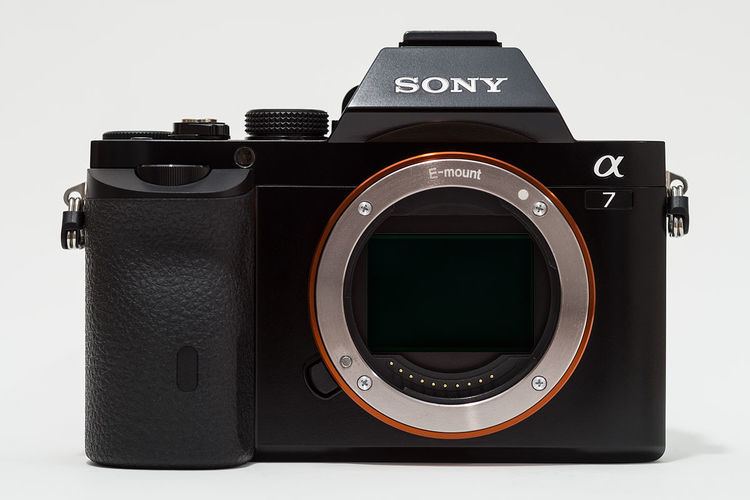ASA/ISO range Auto, 100-25600 | ||
 | ||
Type Mirrorless interchangeable lens camera Maximum resolution 6000×4000 (3:2) (24 megapixels) Storage Memory Stick Pro Duo, Pro-HG Duo, SD, SDHC, SDXC | ||
The Sony α7, α7R and α7S (the α is sometimes spelled out as Alpha) are three closely related digital cameras. The first two were announced on 16 October 2013 and the third on 6 April 2014. Externally they are identical except for the model number. They are Sony’s first full-frame mirrorless interchangeable lens cameras and share the E-mount with the company’s smaller sensor NEX series.
Contents
The α7 II was announced in November 2014, and is the first in the family to revise the original body and ergonomics. The α7 series is targeted at experienced users, enthusiasts and professionals. The α7R II was announced in June 2015.
The Sony α7 and α7R have the model numbers ILCE-7 and ILCE-7R respectively. In addition, the α7S, the α7 II, and the α7R II have the model numbers ILCE-7S, ILCE-7M2, and ILCE-7RM2. Sony's new model naming prefix strives to unify model names. "ILC" indicates Interchangeable Lens Camera followed by an indicator of A-mount "A" or E-mount "E"
Pre-announcement rumours speculated that the new camera would be named "Sony NEX-9".
Although the α7 series uses full-frame sensors and has a DSLR-shaped design, α7 cameras are smaller and weigh less than Olympus OM-D E-M1 with its small micro four thirds sensor and can also be compared with the lightest full-frame DSLR. Compared to the smallest and lightest APS-C DSLR Canon EOS 100D, the α7 is 67 grams heavier and a bit larger, but the thickness is only two thirds of Canon's. The α7 price is significantly lower than a comparative full-frame DSLR price, but still higher than that of a low or mid-end compact camera price. Compared to the Nikon D800E, the weight of Sony α7R is only about a half and the price is about two-thirds.
Variations
In 2015, three new models became available in the α7 series. They are the α7 II (ILCE-7M2), α7R II (ILCE-7RM2) and α7S II (ILCE-7SM2). Sony continues to deliver the first generation models, even three years after the launch.
The basic α7 II model has 24 MP and hybrid autofocus.
The second generation common ground is the newer and improved body design as well as the world's first five-axis sensor-shift image stabilization system for a full-frame ILC. Sony claims that this can compensate a 4.5-stop equivalent of camera shake. In-body stabilization requires no special lens features, and mirrorless system cameras can typically accommodate lenses from any SLR system. As an upgrade of the α7, the α7 II has the same 50 Mbit XAVC-S codec as the α7S but lacks 4K video, and the five-axis stabilization is less effective in video mode than that used in the Olympus OM-D E-M1. However, the crop mode used in the α7 II does not incur "very much loss in image quality", unlike that of the Nikon D750.
On 14 June 2015, Hasselblad announced the Lusso, a variant of the Sony α7R marketed by Hasselblad.
Features (universal for α7-series)
Reception
The cameras received a positive reception from critics. DxOMark crowned the α7R as the highest ranking full-frame mirrorless camera, with a score of 95 (the same score as the Nikon D800, but one point behind the Nikon D800E). The α7 achieved a score of 90, higher than the Nikon Df and Nikon D4 professional DSLR cameras, as well as the Sony SLT-A99. The Verge rated the cameras 8.3 out of 10, commenting that "It might be a few years before we realize it, but when the DSLR is relegated to a niche status among specialty photographers and full-frame mirrorless cameras dominate the market, we'll have the α7S to thank as the cameras that started it all." EPhotozine which rated the α7 5 stars, meanwhile praised the α7 series' price point for making them "the cheapest full-frame digital cameras currently available" while being lighter and smaller than comparable cameras. It awarded the α7 "Camera of the Year." The α7R was awarded by Imaging Resource as the "Camera of the Year".
